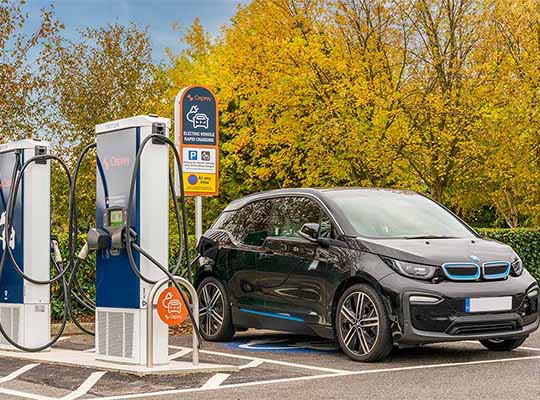Secondary batteries, also known as rechargeable batteries, are energy storage devices that can be charged as well as discharged multiple times. Unlike primary batteries which are of single use, secondary batteries are designed for repeated cycles of use. Hence, secondary batteries are more environmentally friendly and cost-effective in the long run.
According to a report published by Allied Market Research, the global secondary battery market size is projected to reach $261.8 billion with a considerable CAGR from 2023 to 2032. The Asia-Pacific region is currently dominating the market with the highest market share and is also expected to witness the fastest growth rate during the forecasted period. This is attributed to the presence of multiple growing economies like China, India, Japan, and others. China is currently the largest electric car market and is expected to remain the world’s largest EV market in the future. Indian government is pushing for e-mobility, which is surging the manufacturing of secondary batteries. A significant rise in the demand for 5G towers and secondary batteries in Japan is also contributing to the growth of the market.
There are various types of secondary batteries which differ in terms of energy density, weight, cost, and environmental impact, making them suitable for various applications based on specific requirements.
- Lithium-ion (Li-ion): These are widely used in consumer electronics, electric vehicles, and renewable energy systems due to their high energy density and light weight.
- Nickel metal hydride (NiMH): These are common in portable electronics, hybrid vehicles, and rechargeable batteries for everyday use.
- Lead acid: These are found in applications like automotive batteries, uninterruptible power supplies (UPS), and backup power systems.
- Lithium polymer (Li-Po): These are similar to Li-ion but with a different electrolyte. These are often used in small electronic devices where a flexible form factor is needed.
- Nickel cadmium (NiCd): These are less common today due to environmental concerns, but still used in specific applications like emergency lighting and cordless power tools.
- Sodium-ion: This is an emerging technology that shows promise for grid energy storage due to the abundance of sodium.
- Flow batteries: These are utilized in large scale energy storage applications, particularly for renewable energy integration into the grid.
Secondary batteries find application in a wide array of fields including consumer electronics, medical devices, aerospace, renewable energy storage, grid energy storage, power tools, marine applications, etc. These batteries play a crucial role in modern technology, enabling portable and efficient power solutions in various domains.
Moreover, recent technological developments in secondary batteries have focused on improving performance, safety, and sustainability. Some of the major key trends include –
- Fast charging technology – Its efforts to develop batteries that can be charged rapidly without compromising their lifespan is likely to make electric vehicles more practical and convenient.
- Artificial intelligence (AI) battery management – It includes implementing AI algorithms for better battery management, optimizing charging cycles, and predicting battery health to extent overall lifespan.
- Graphene batteries: Integrating graphene into battery designs can improve conductivity, increase energy density, and enhance the overall lifespan of batteries.
- Advanced electrolytes: R&D activities are going on in full sway for new electrolyte formulations including ionic liquids and polymers in order to enhance the safety and stability of batteries.
With this drift on board, many key companies are launching new products and adopting business strategies like partnerships, acquisitions, and collaborations. For instance, Northvolt produced its first lithium-ion battery cell. Reliance New Energy Solar Limited entered into an agreement with Faradion to acquire 100% of the equity shares for a total value of USD 117 million.
Author’s Bio – Suchita Gupta is an explorer, musician and content writer. While pursuing MBA, she found that nothing satisfies her more than writing on miscellaneous domains. She is a writer by day, and a reader by night. Besides, she can be found entertaining her audience on social media platforms. Find her on LinkedIn & Instagram.













